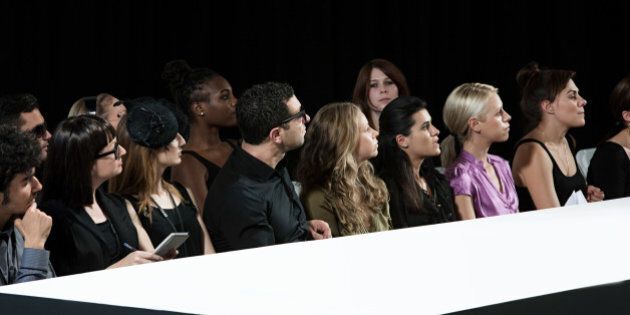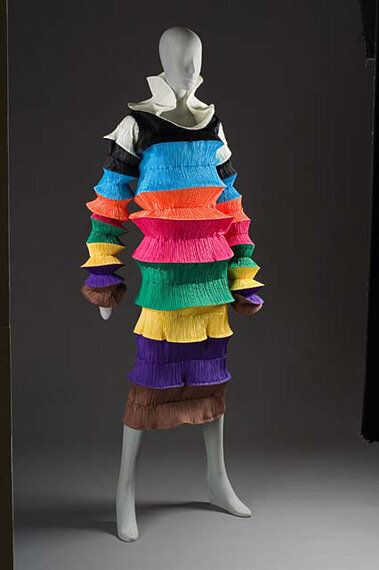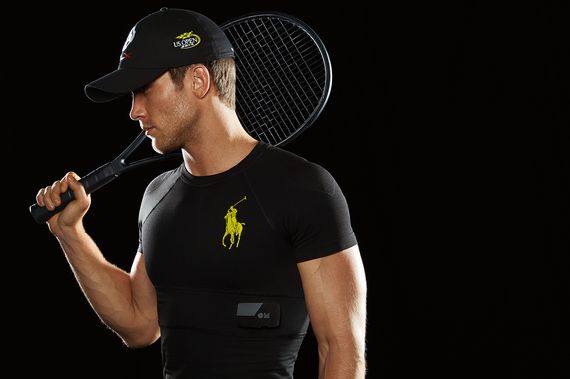
For aficionados of the late-great Steve Jobs, the story is as good as legend. It wasn't a computer science course that elevated the founder of Apple into a Silicon Valley deity -- but a calligraphy class.
Jobs championed the importance of design throughout his career. The clean simplicity of Apple design elevated their products leagues ahead of the competition, and turned everyday consumers into brand evangelists. A polled 59% of iPhone users swore blind loyalty to the product.
So what happened to the Apple Watch? Yes, it's profitable -- but it's not ubiquitous. Some have touted the relative failure of the Apple Watch as the first dent in a corporation without their resident creative genius helming the ship. The wearable market is stirring, but is nowhere near the omnipresent force of cell phones.
It appears the wearable camp has siphoned into two demographics: fitness fanatics, and gadget enthusiasts. For everyone else, the hard truth is that wearables are not yet beautiful, stylish, or must-have.
New York Times writer Vanessa Friedman may have hit the nail on the head when she penned a scathing review entitled Why I'm Breaking Up With the Apple Watch.
"No matter how attractive the Apple Watch is in the context of other smartwatches or smartbands," she wrote, "no matter how much of an aesthetic advance its rounded corners and rectangular display, it still looks like a gadget."
Enter Anna Wintour; who has reigned atop of the fashion pyramid since she took over American Vogue in 1988. The annual Met Gala is haute couture's Oscars, and now looks ahead to take on technology's emerging influence on fashion.
This year Andrew Bolton, the new Curator-In-Chief of the Costume Institute, has stepped up to produce a groundbreaking exhibition titled Manus X Machina: Fashion In The Age Of Technology. Unsurprisingly, Apple are sponsoring the event, and social media maven Taylor Swift is the celebrity co-chair.
The exhibition promises to showcase cutting edge technologies such as laser-cutting, thermo shaping, circular knitting, and 3D printing.
Wintour and Bolton are both habitué's of the historical fashion discipline as reflected in the themes of previous Met Gala exhibits. See, China: Through The Looking Glass in 2014, and a 2013 retrospect of "America's First Couturier" Charles James, who died in 1978.
Now with two industry behemoths poised to embrace the intersection between technology and fashion, this year's Met Gala promises to be a landmark event for design -- and the future of wearables.
Manus X Machina has procured Issey Miyake's 1994 creation, the Flying Saucer Dress from LACMA, indicating that the history of wearables will make an appearance in Bolton's imagining of wearable tech, past and present.
The Flying Saucer Dress was a pioneer, utilizing a heat press to construct it. The dress could collapse and return to it's original shape on cue, making it one of the first wearable devices, at least in a pre-digital age. Unfortunately it looked a bit like a stack of Chinese Lanterns glued together, and never really captured the attentions of the mass market.

Manus X Machina's rumored emphasis on the digital production of textiles could herald in a new era for wearables. For an industry that has synonymised quality with the hand-crafted, embracing machine-produced fabrics could be the seal of approval for fashion to further experiment with smart textiles.
Some designers have already experimented with smart textiles, but within a limited scope. British designer Hussein Chalayan debuted a range of transforming dresses using smart textiles back in 2007.

In 2014, Ralph Lauren rolled out the Polo Tech Shirt for the U.S Open in 2014. The biometric shirt, geared towards tennis players, captures vital signs and relays them to your phone. It now retails for $295.

Outside of the hallowed walls of traditionalist ateliers, the emergence of smart textiles has opened up a new path for innovative designers.
London design house, CuteCircuit, is paving the way forward for wearables. Ryan Genz and Francesca Rosella founded the label in 2004. With Rosella being an alum of Valentino, design was always the name of the game.
Unlike many other proponents of smart textiles, who have by-and-large used fabrics for aesthetic appeal, CuteCircuit aims to engage with the emotions of the wearer. They designed the Hug Shirt, which allows users to replicate the sensation of hugging one another from anywhere in the world. They also designed the Twitter Dress. As modeled by Nicole Scherzinger back in 2012, the Twitter Dress allowed users to have their messages displayed on the dress by tweeting at it. A pretty horrific idea in 2016, but quite novel at the time.

CuteCircuit has already garnered it's Met cred, with singer Katy Perry sporting a design on the Gala red carpet in 2011. Vogue ranked it as one of Perry's best looks.
To return to Vanessa Friedman's observations in the New York Times, the wearable gadget probably isn't going to make the cut for stylistas anytime soon. But smart fabrics might be the bridge between fashion and functionality that could steer wearable technology to the mass market.
As The September Issue director R.J Cutler said on Wintour, "Anna is all about 'next." If this year's Met Theme is anything to go by, she may be eyeing up technology as fashion's next big moment.
Follow HuffPost Canada Blogs on Facebook